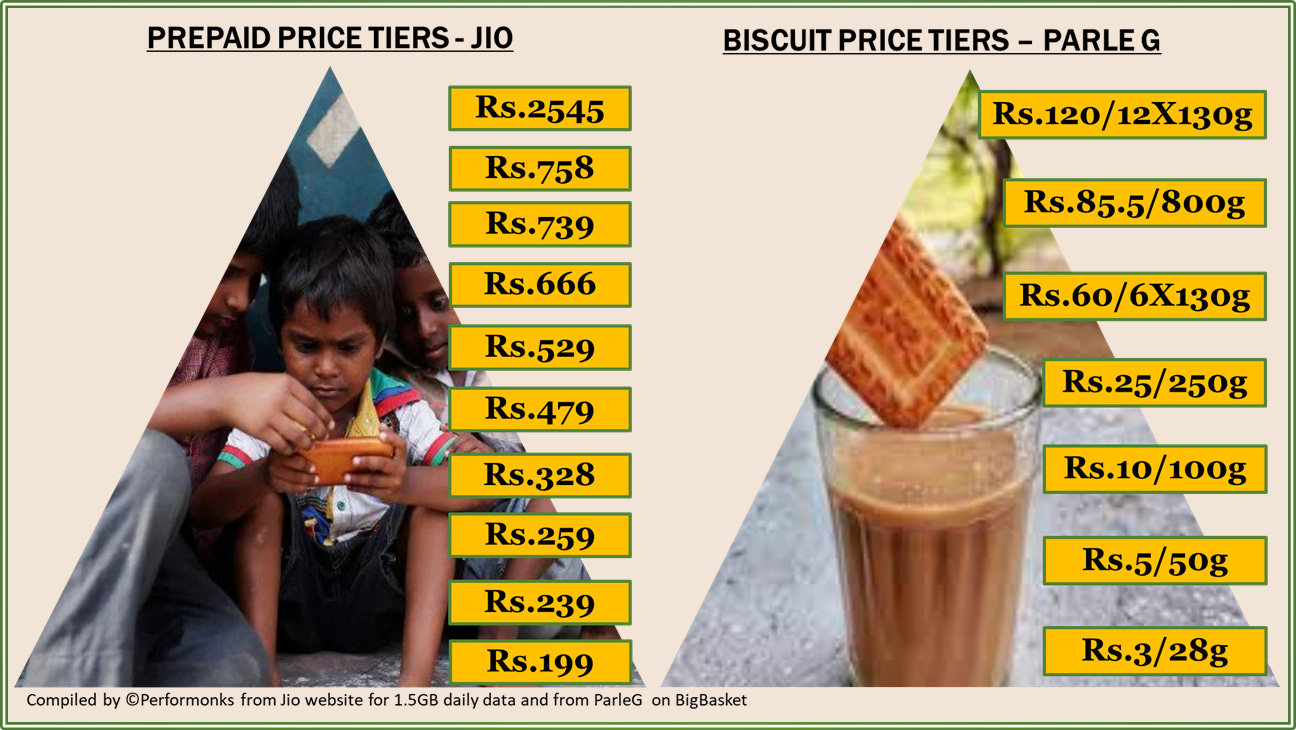Large successful brands that reach at least three of the four Indias adopt the critical strategy of multilevel pricing.
India is like a vast mall with three floors and one penthouse. Each floor has a distinct consumption capacity and preferred price points. As income grows, people on the lower floors start ascending – a household that buys a Re.1 shampoo sachet moves to Rs.2 and so on. The opposite happens during a downturn.
That’s why, brands that operate at multiple price levels capture share of wallet from throngs of consumers riding up and down.
This golden rule applies to all categories. Take a look at Parle G and Jio Prepaid. Both operate across price tiers – I can almost visualize consumers going up and down the ladder in the chart below!

A fascinating set of insights emerge
- The kind of value that tech adds to a consumer’s life cannot be denied: while ParleG starts at Rs.3/- and goes up to Rs.120, the lowest Jio price is Rs.79/- more than the highest ParleG price
- Having said that, given that Indians have a constrained cash flow, tech brands have not vacated magic price points – the pre-paid top-up for Jio starts at a price of Rs.15/-
- Slow and steady growth vs shock entry: While Parle G is 94 years old and has stayed at these magic price points, Jio launched just eight years ago (in 2015) and offered free talktime+data for almost a year to get to this present state.
- Operational complexity. Operationally, both a telecom network and a biscuit factory involve huge capital investments. But a telecom company can have as many SKUs (stock keep units) as there are consumers – once the ‘data pipes’ are built, whether you buy 1GB or 0.63GB, it does not matter. But for a consumer goods company, more SKUs mean more complexity and cost – notice how ParleG has kept all its multi-packs at 130g.
- Lastly, a higher price point does not mean a richer consumer. The affluent Indian may buy the Rs.3/- pack for themselves as a portion-controlled snack. They may also buy the Rs.120/- multi-pack to distribute to kids in temples or at streetlights. Likewise, an affluent Indian might also be found at a Rs.479/- prepaid plan.
That’s what makes the market so complicated… and so interesting. You never know which consumer will upgrade or downgrade to which price point.
Thanks for reading.
